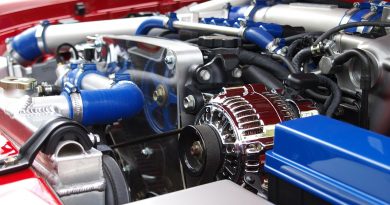Elon Musk’s magic transportation idea with Supersonic Speed.
Elon Musk’s Wild Idea for City-to-City Rockets Just Might Work
Your day may begin this way. You wake to a blast of email and messages: Your manager needs you at a pressing meeting in London early this evening. It’s morning, and you’re in New York City. So you snatch a Uber downtown, board a ship to the SpaceX stage in New York harbor…
At that point things get fascinating.
On the stage stands a 350-foot rocket, nicknamed BFR for “huge f**king rocket”. You ride a lift up to the lodge, lash in close by 100 different travelers, and bring to the skies with a thunder. You feel weightless as you take off finished the bend of the Earth at 17,000 miles for each hour, 10 times the speed of the Concorde supersonic stream.
Twenty after nine minutes, you touch down on an indistinguishable stage close to the port of London. Another ship, another auto, and you make it to the meeting — crisp and on-time.
An UNEXPECTED DETOUR
That is the vision SpaceX CEO Elon Musk outlined amid his keynote speech at a month ago’s meeting of the International Astronautical Congress in Adelaide, Australia. He started by portraying his most recent idea for colonizing Mars, yet then took a startling makeshift route.
“On the off chance that you construct a ship that is fit for going to Mars, consider the possibility that you take that same ship and travel between various places on Earth?” he pondered so anyone might hear.
His answer: city-to-city rocket benefit, the speediest business travel at any point made. Fundamental ballistic material science yields some astonishing travel times. New York to Shanghai would take 39 minutes. Los Angeles to Tokyo in 32 minutes. Anyplace to anyplace else in under 60 minutes. (Simply keep an eye out for rocket-slack, which may be surprisingly more dreadful than stream lag.)Genius or vendor — he’s been called both — Musk is a specialist at taking techno-dreams and influencing them at any rate to appear to be reasonable. He claims BFR will start flying inside five years, and that the cost of a globe-straddling ride would be “about the same as full toll economy in an air ship.”
Those guarantees raised a great deal of eyebrows. “There’s a variety of handy issues to determine,” says Derek Webber, chief of Spaceport Associates, a research organization in Damariscotta, Maine. “My hunch is that his proposed timescale is too short, and his specialty is too vast.” But then he includes an oft-heard admonition.
“When in doubt, I would state don’t wager against Elon Musk.”
THE HISTORY OF GOING BALLISTIC
Designers have been attempting to create point-to-point rocketry on Earth since before there were rockets, for the most part with troubling outcomes. Ahead of schedule in the nineteenth Century, German creator Heinrich von Kleist proposed utilizing mounted guns shells to convey mail, however kicked the bucket before truly investigating the thought’s practicality.
“Rocket mail” really happened a century later. In 1931, Austrian rocket pioneer Friedrich Schmiedl launched 102 bits of mail between towns, a thought got by a few different business people in Germany, India, and the U.S. The administration demonstrated questionable, be that as it may, and the excursion was excessively ruthless to considerably consider travelers.
“At that point there was Pete Conrad,” says Webber, alluding to the ground breaking Apollo 12 space traveler who strolled on the moon in 1969. In the 1990s, Conrad worked at McDonnell Douglas to create the Delta Clipper-X, a reusable rocket carry that would (like Musk’s BFR) take off and arrive vertically. In any case, McDonnell Douglas deserted the Clipper-X, and Conrad’s endeavor to begin his own traveler rocketry organization, Universal Space Lines, went no place.
Another wake up call originates from the National Aerospace Plane, says Roger Launius, a veteran space expert and previous boss history specialist for NASA. In the 1980s, the U.S. military burned through billions of dollars (the real sum is arranged) to build up a hypersonic plane – just to locate the mechanical obstacles outlandish. “It’s an unexpected approach in comparison to what Elon is discussing, however the idea and difficulties are comparative,” Launius says. “This stuff is harder to do than the backers say.”
In any case, both Webber and Launius are strong of the city-to-city rocketry idea. “Bringing down the cost per pound to circle changes everything,” says Launius. At that point not simply point-to-point but rather all rocketry would turn out to be immensely more down to earth.
Musk has been doing quite recently that with SpaceX. For quite a while, the cost of room get to floated around $10,000 a pound. Since number is nearer to $1,000 a pound—not yet “economy charge” but rather a colossal change.
A craftsman’s origination demonstrates a traveler rocket arriving in Shanghai. SpaceX
Modest dispatches could make rocket driving pragmatic, and a high volume of suburbanites could then again help drive costs even lower. “I trust Musk is appropriate in hoping to individuals as his best prospect for paying cargoes,” Webber says. Airport regulation, therapeutic flight issues, traditions, and so forth are outstanding difficulties, “however none of these speak to insoluble issues.”
Musk’s most noteworthy impediment might be wellbeing. “First time you kill a traveler on one of these things, the business is done,” Launius says.
That doesn’t mean Musk should surrender thinking beyond practical boundaries. In the event that anything, Launius recommends going much greater. A definitive tech for opening up space get to, he contends, is a radical idea called a space lift. This would be exactly what it sounds like: a link coming to starting from the earliest stage 23,000 miles high, with a lift auto riding the link to convey individuals and satellites into space. It could at long last influence space to get to normal and extremely inexpensive — and it could keep running on sustainable power source, taking out the few hundred thousand pounds of carbon outflows created by each dispatch.
“I was conversing with the aviation individuals at Syracuse University and they say, ‘Gracious better believe it, we can thoroughly do this’,” Launius says. “On the off chance that it’s in fact plausible, well, that truly would change everything.”




